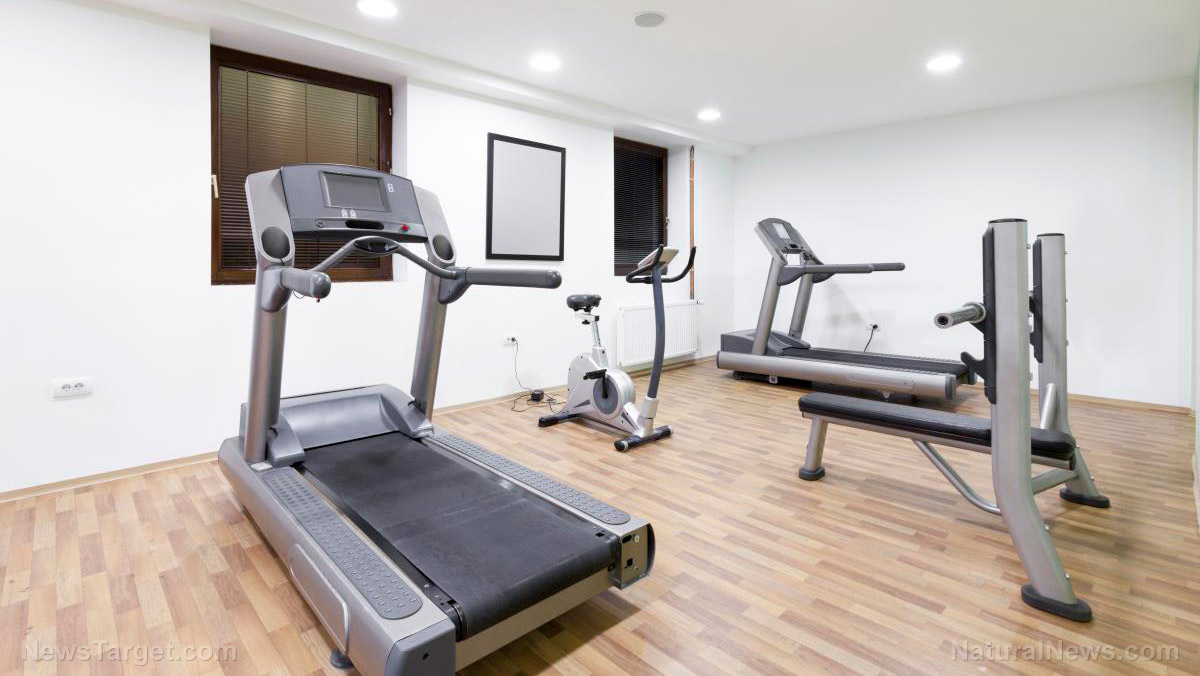Walking for weight loss: The calories you burn depends on how much you weigh and how fast you’re walking
11/17/2019 / By Grace Olson

Staying fit requires you to move. Certain foods can help, but it’s still not a replacement for an active lifestyle.
People might find staying fit to be difficult due to a busy schedule, but there are some exercises that you can easily integrate into your lifestyle. One of these is walking.
Walking, as a physical activity, is already advantageous. You do not need to go to the gym to walk – go to a park and enjoy the scenery. It’s also relatively low-risk. Compared to running or jogging, the impact on the knees and feet are not as intense when a person walks.
Anyone can walk. As long as you have two functioning legs, you can set aside time for walking. Considering that a lot of people have sedentary lifestyles, walking is an accessible means of maintaining weight.
Walking and burning calories
The body needs energy to function properly. This comes in the form of calories, which are found in the food people eat every day. But when a person consumes more calories than he can burn, it leads to weight gain. Likewise, burning more calories than you take in results in weight loss.
It is important to note that your diet is also crucial to weight loss. It does not matter how many hours you walk – if you keep eating too many high-calorie foods. Along with exercise, take care to choose healthier foods as well. (Related: Want to lose belly fat? Eat more of these 27 superfoods.)
Calories burned based on weight and pace
While weight and distance are the two biggest factors when walking, walking speed contributes to its fair share. The faster that you walk, the more distance you cover. Generally, a 180-pound person burns 100 calories per mile while a 120-pound person burns 65 calories over the same stretch.
Considering that most people have busy schedules, it is more convenient to measure weight and pace. Distance can be difficult to measure due to non-linear routes, but any person can always have a watch with them. Check the chart below to get an estimate of the calories you burn when you go out for a walk.
Weight (120-140 pounds)
Walking at a moderate pace (3 mph)
- 15 minutes: 50 calories
- 30 minutes: 100 calories
- 1 hour: 200 calories
Walking at a fast pace (4-5 mph)
- 15 minutes: 95 calories
- 30 minutes: 185 calories
- 1 hour: 370 calories
Weight (140-160 pounds)
Walking at a moderate pace (3 mph)
- 15 minutes: 60 calories
- 30 minutes: 112 calories
- 1 hour: 225 calories
Walking at a fast pace (4-5 mph)
- 15 minutes: 100 calories
- 30 minutes: 214 calories
- 1 hour: 430 calories
Weight (160-180 pounds)
Walking at a moderate pace (3 mph)
- 15 minutes: 65 calories
- 30 minutes: 127 calories
- 1 hour: 255 calories
Walking at a fast pace (4-5 mph)
- 15 minutes: 120 calories
- 30 minutes: 245 calories
- 1 hour: 485 calories
Kick things up a notch
Over time, as your body becomes used to walking every day, you may want some extra challenge. Here are some ways to increase the intensity of your walks:
- Carry some weights. This increases the amount of effort that you put into walking. Try carrying some dumbbells while you walk. However, be careful of carrying too much. You might put too much strain on the knees and feet.
- Try going uphill or upstairs. These will burn more calories compared to walking on level ground or downhill. Integrate this into your lifestyle by opting for the stairs rather than an elevator or taking some time off for hiking.
- Go further or faster than before. Use a fitness tracker to mark your progress. If walking at a moderate pace has become too easy for you, increase your walking speed. Always try to beat the record you have set before. When this happens, this is an indication that you are steadily improving.
Integrating walking into your lifestyle
Try the following tips to add walking into your daily schedule:
- If you have a dog, try to walk it for a longer time every day
- Make it a habit to walk for a bit during your lunchtime
- Set aside a time of the day for walking, like after dinner
- Park the car further from the entrance than usual
- If your workplace is near, walk to work instead of bringing a car
It can be difficult to set aside time for physical activities. Add walking into your lifestyle and try to increase its intensity each time. Not only will you be burning calories, but you will also be enjoying the environment as well.
Learn more methods and physical activities for losing weight at FightObesity.news.
Sources include:
Submit a correction >>
Tagged Under:
anti-aging, anti-obesity, calories, cognitive health, exercise, fitness, healthy habits, mind body science, natural remedies, prevention, slender, stress relief, walking, weight loss, women's health
This article may contain statements that reflect the opinion of the author
RECENT NEWS & ARTICLES
LongevityScienceNews.com is a fact-based public education website published by Longevity Science News Features, LLC.
All content copyright © 2018 by Longevity Science News Features, LLC.
Contact Us with Tips or Corrections
All trademarks, registered trademarks and servicemarks mentioned on this site are the property of their respective owners.




















